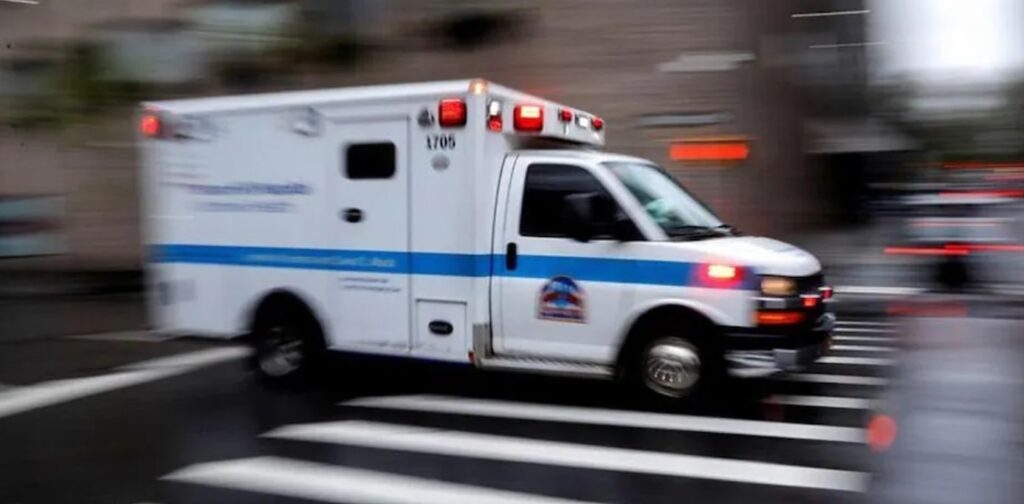Welcome to my blog to understand the intricacies of using ambulance services during emergencies—an indispensable facet of our healthcare system. Explore vital tips that will empower you to navigate ambulance services with confidence, ensuring preparedness for medical emergencies. From selecting the right provider to adopting proactive measures for smoother responses, this blog will unravel the crucial elements of this often-overlooked lifeline. (Featured image credits: Internet)
The insights shared in this blog are drawn from firsthand experiences—both mine and those of friends—during challenging situations of medical emergencies. These real-life encounters underscore the importance of being well-informed and proactive when it comes to ambulance services.
Hi, This is Venkatesh. I write on Personal Finance, Stock Investing, Productivity and Time Management. You will be interested to read more about me and the purpose of my website.
If you are interested in these topics do subscribe to my blogs. You would maximum receive 4 to 5 emails a month. Do check my Blog Index for all my blogs.
The Basics around Ambulance
Purpose
Primary Purpose
- Transport patients to Hospital, who are immobile i.e. Injured, unconscious
- Rapid transport of the patient to the Hospital (Ambulance has the highest priority of way in the roads)
- Provide medical support on the way to the Hospital – Support during the Golden hour
Secondary Purpose
- Help the patient get back home after discharge
- Transport wheelchair-bound patients who require clinical monitoring.
Types of Ambulance
Basic Ambulance
- These ambulances come equipped with important life support equipment, such as a stretcher, oxygen supply units and a blood pressure monitor.
- This cannot be used for transporting patients who require emergency medical assistance or intensive care.
- There will be no paramedic available in these Ambulances.
Ambulance with Life support
- These Ambulances have basic as well as advanced medical equipment, such as ECG monitors, nebulizers, defibrillators, resuscitation kits, suction units, transport ventilators and more.
- Paramedics are available in the ambulance to help the patients with intermediate medical attention.
What does your Health Insurance say about Ambulance?
Most of us have health insurance and it is important to understanding the nuances of health insurance coverage for ambulances is crucial.
What is Covered?
- Emergency travel to the nearest hospital is covered; however, if another hospital is needed, the transfer must be doctor-prescribed for a valid claim. This happens in a situation where the nearest hospital is unable to provide the needed medical support.
- The maximum amount paid is capped, either as a percentage (Usually 1%) of the total sum insured or a flat amount like ranging from Rs. 2,000 to Rs. 10,000, depending on the kind of policy.
What is not Covered?
- Transportation from one hospital to another or back home upon discharge is not covered.
- Cost of Ambulance Collar and Ambulance Equipment
- Use of Ambulance for admission for planned hospitalization
Other Key Points
- The Ambulance service provided must be a registered provider with the road traffic authorities
- Some health insurance companies offer their ambulance assistance; check the policy wording for details and contact numbers. Sample clauses are provided for reference.
- There may be restrictions on the number of times you can claim in a year for Ambulance
Note: The above is only a piece of representative information which is common in most of the policies. However, you need to check for such clauses in the policy wording document of your policy. Search for the words “Ambulance” in your Policy wording document to gather more details.
Below are a few samples from the policy wording document.


Due Diligence about Ambulance Services
During an emergency, an ambulance is a critical lifeline. However, your mental resources may be constrained during such times, making it essential to conduct proper research beforehand. Here are some steps to consider:
Research about Ambulance Services
- Explore ambulance services in your locality.
- Assess the types of ambulances they offer, from basic to those with full life support facilities.
- Investigate their charges for transporting to different hospitals
- Don’t rely on a single service provider; Your due diligence should cover details for 2-3 to ensure options at times of emergency.
Contact details of Ambulance Services
- Gather contact details of these ambulance service providers.
- Share this information with family members for reference during emergencies.
- Put these numbers in your Mobile phones as well.
In an Emergency Situation
When faced with an emergency, clear communication and coordination are vital:
Clearly Specify Pick and Drop Points
- Clearly communicate the pick-up and drop points to the service provider and to avoid any confusion.
- Share your location with the driver for quick reach
In my own example for transfer from Hospital X to Y, the Ambulance went to Hospital Y and was waiting for us there!
Have some support
- Do have someone accompany you who can guide the driver to the hospital if they are unfamiliar with the route.
- They can also be of help during the subsequent admission in Hospital.
Collect Bills
- Ensure you or a family member collects receipts at a later point (if not at the time of admission) for submission to the health insurance company.
By being prepared through due diligence, you enhance your readiness during emergencies, ensuring a smoother experience when every minute counts.
Conclusion
Understanding how to navigate ambulance services during emergencies is paramount for ensuring swift and effective medical assistance. From knowing the capabilities of the ambulance provider to being prepared with essential information, and some tips covered in this blog can make a significant difference in critical situations.
The purpose of ambulances extends beyond transportation—they serve as mobile units of life-saving care. By staying informed and proactive, individuals can contribute to a smoother emergency response, ultimately enhancing the chances of positive outcomes in times of medical crisis. Remember, being prepared can be a lifeline when every moment counts.


Quite useful. Thanks
You are welcome. Glad that you found this blog useful.